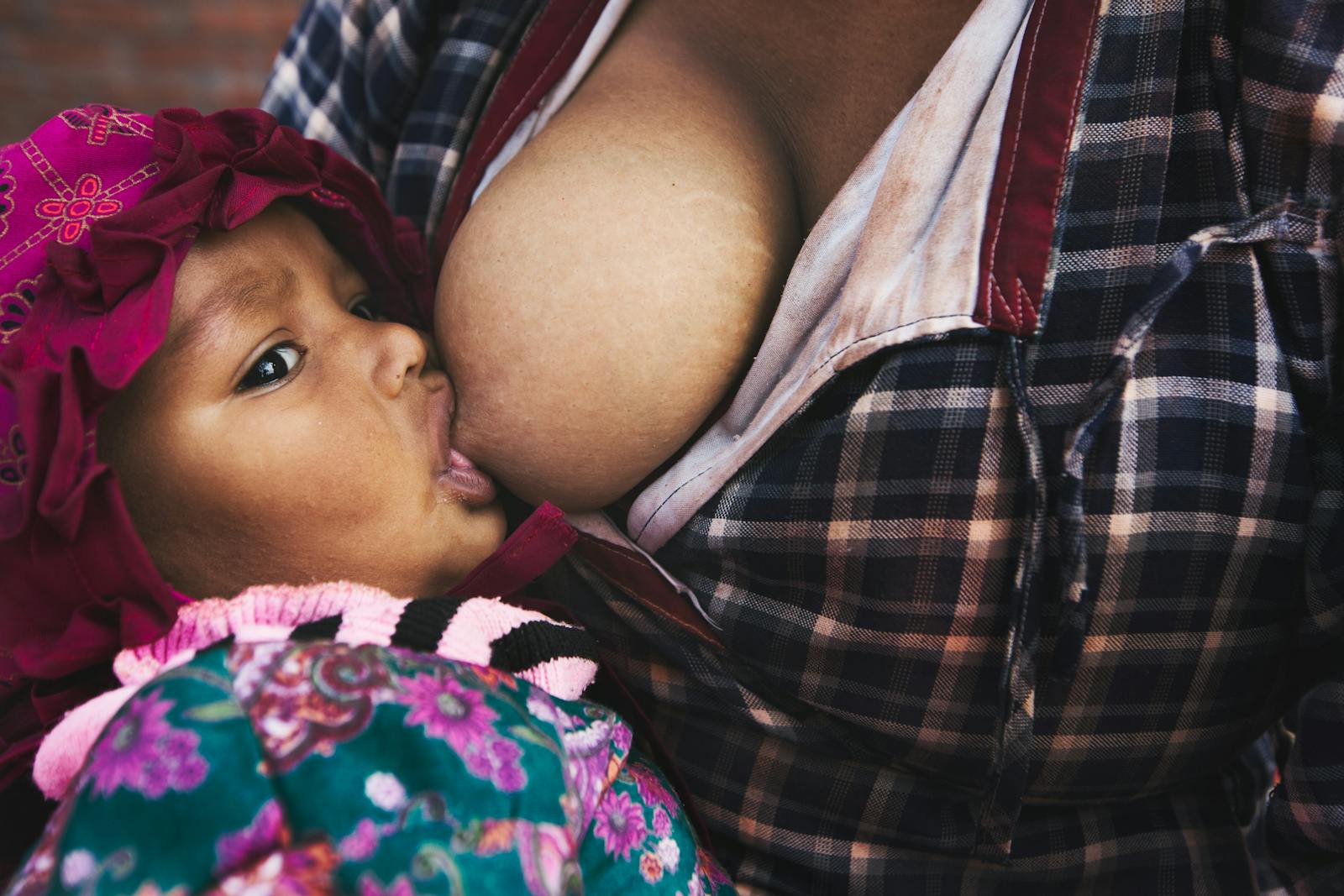A woman’s breast is likely to sag at one time or the other. Although most mothers notice the changes in the shape and appearance of their breast after they wean their babies. Experts have blamed the drooping process on pregnancy and not nursing. However, this is not to hold pregnancy as solely responsible for saggy breasts. Other factors like:
▊ Age
▊ Genetic
▊ BMI
▊ lifestyle habits like smoking
and other negligent acts like engaging in rigorous exercises like running and jogging without proper support of the breasts are key players in the saggy appearance of breasts.
When the milk comes in
Following the delivery of baby, the breast experiences a gradual and consistent supply of milk. All thanks to the hormone_ prolactin. The organ which had slightly increased in size during pregnancy may become enlarged and in some cases, engorged. The increase in size makes the ligament supporting the breasts to stretch. This results in a slightly saggy appearance. Whether or not a mother decides to breastfeed, this change will occur.
Down to the reach
An advantage of this is that it makes lactation easier, especially for first time mums. Perky breasts and taut nipples are most likely to cause latching issues. So, it is not a bad development that the breast needs to submit its perkiness to allow for easier latching.
Afterwards
The initial saggy look may not be so obvious as the continual supply of milk keeps the breast full.
It takes a week or more for the milk production to balance between demand and supply. At this time, the breast returns to its prenatal size as lactation continues.
Changes after weaning
At the end of the months-long nursing, the breasts experiences a reduction of blood flow to the area and is being deprived of its constant milk supply. During the course of six months post weaning, when the milk tissues are gradually replaced by fatty tissues, the breast may assume its record saggy state. But a mother who is not breastfeeding will experience this earlier than a nursing mother .
Maintaining the shape while nursing
Although it’s been established that breastfeeding is in no way responsible for saggy breasts, certain lifestyle habits of mothers during the nursing period can contribute to the sagginess. These includes; lack of proper support, sudden weight gain/loss, abrupt weaning etc. These measures would ensure mothers are not helping the sagging course;
✔ Gradual weaning
Weaning of the child should be a gradual process which should aim at getting the child comfortably accustomed to feeding and getting nutrition outside the mother’s milk. It also helps the mother’s body particularly the breasts get adapted to the changes overtime.
✔ Wearing good and supportive bra
The active hormones which are stimulated by baby’s sucking results in a regular supply of milk. This makes the breast full, heavier and tend to heave downwards as the tissues can no longer support the weight. Investing in good supportive nursing bras with wide straps would keep the shape of the breast intact and support its weight.
✔ Being cautious of sudden weight loss/gain
Just as weight gain and loss impacts on the skin and general body, it could make the breasts appear flabby as the skin around the breast tissues looses more of its elasticity. In the case of weight gain, breasts could become weightier so that it tends to weigh southwards. The surest bet to avoid this outcome is a slow, steady and nutrition oriented weight loss and gain.
Quick facts
For many women, boobs are one of the most prized body possession. Droopy boobs may generate confidence issues and affect the dress sense and style of some women. Despite this, important facts are to be noted about the self, drooping breasts and the role of breastfeeding
1.) Breasts don’t necessarily sag because babies have sucked them. Women who don’t suckle their children do have saggy breasts too. Experts have claimed that pregnancy rather than nursing causes saggy breasts. The flabbiness witnessed after weaning is as a result of the absence of milk.
2.) Ptosis; the medical term for sagging breast is not a medical issue but a cosmetic one. With the manner in which women are toiling to keep their breast pointy and perky, one would think a saggy breast is a symptom of liver diseases or a firm one is immune to cancer. Thank God we know.
3.) Rare are those whose breast would be immune from sagging. If you doubt this, visit a ‘ladies only’ swimming pool. You will return home hugging yours (winks).
4.) They should sag: breasts are not muscled organs. They are only attached by ligaments, to the muscles of the chest. That is why a breast is characteristically soft, flexible and fleshy. Even sportswomen need sporting bras to keep ‘things’ enclosed. If you want anything to be firm and taut all the days of your life, spare the boobs.
5.) Presentation matters:
The way others see you is the exact way you have exposed yourself to their glances and glare. If you’re not confident about the size and shape of your breasts, then don’t flaunt it unpackaged.
6.) The one who really cares is you!
Do you know your child cares more for a hug and less for your firm breasts? Do you know that most bosses and clients are interested in your smartness rather than in your cleavage? Aside from your partner, no one really gets to visually explore those sexual parts of your body. And if he hasn’t made a case of it, don’t ask for his opinion or inspire a feeling of insecurity.
7.) Perky and uplifted does not mean perfect:
Away from the Eurocentric mentality of beauty standards, breasts don’t actually need to be perky to make a woman beautiful. Beauty is dependent on many factors as comfort, acceptability and style. Hence, whatever is acceptable to you is beautiful. In essence, a you without uplifted breast is not a ugly you.
8.) Sagging breasts can return to their normal shape
Mastoplexy; a breast lift surgery which has become popular is a sworn remedy to saggy breasts. Other remedies includes; muscle toning exercises, good nutrition and some home/natural remedies like the use of olive oil, ice, cucumber, shea butter and others.





